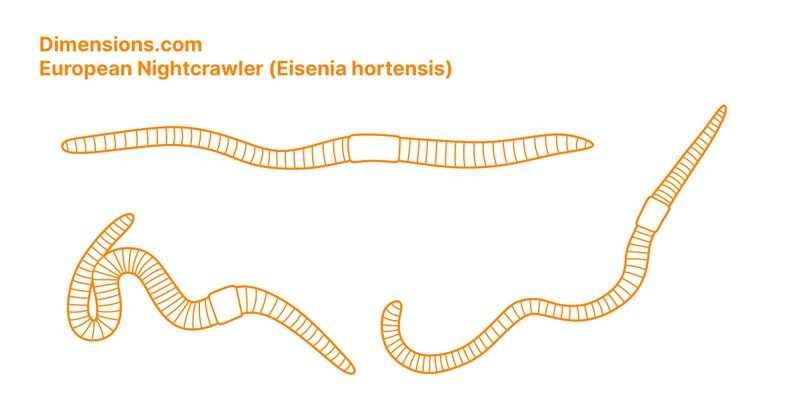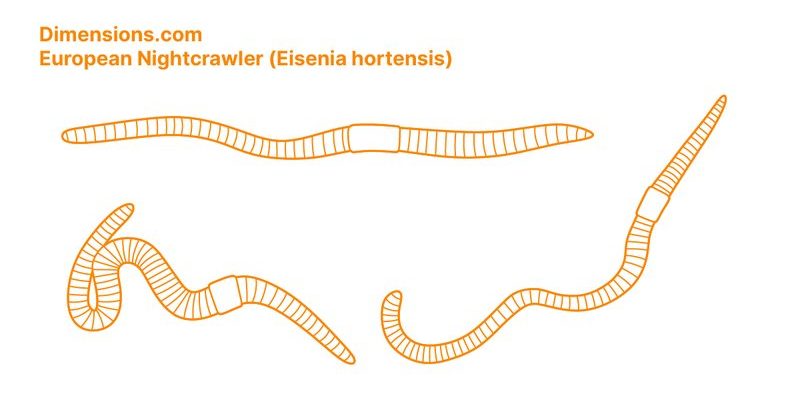
So, where exactly do these squiggly wonders call home? Eisenia hortensis has a fascinating range and distribution that spans across various continents. While these worms are frequently found in Europe, their presence is increasingly noted worldwide, thanks to their adaptability to different environments. Let’s dive into the specifics of their geographic spread and what this means for gardeners and nature lovers alike.
Origin and Habitat
Eisenia hortensis originated in Europe, where it typically thrives in moist, organic-rich soils, like gardens or woodlands. Imagine a cozy, dark environment filled with decaying leaves and plant material—that’s their version of a five-star hotel! This worm prefers environments where moisture is abundant, as it helps them breathe through their skin, which is crucial for their survival.
You might be wondering why these worms are so particular about their habitat. Well, they require a specific balance of moisture and organic matter to thrive and reproduce effectively. In their natural environment, they contribute significantly to the soil’s health. By processing organic waste, they make nutrients more accessible to plants, essentially helping to keep ecosystems flourishing.
Global Distribution
Over time, humans have played a pivotal role in spreading Eisenia hortensis beyond its native range. As people began to recognize the benefits of these worms for composting and fishing, they were transported to various parts of the world. Today, you can find them in North America, Asia, and even parts of South America.
In North America, these worms have been particularly successful due to the favorable climate and abundant food sources. They often inhabit garden plots, farms, and even forests. Their ability to adapt to different soil types and moisture levels makes them versatile survivors, capable of thriving in diverse environments.
Factors Influencing Distribution
Several factors influence the distribution of Eisenia hortensis in different regions. Honestly, it’s a mix of climate, soil type, and human intervention. For example, in warmer areas where the soil remains consistently moist, these worms can reproduce more quickly. This ability to thrive in various conditions makes them a popular choice for gardeners and farmers looking to enrich their soil.
Another important factor is organic matter availability. Eisenia hortensis loves to munch on decomposing leaves, food scraps, and compost. Regions rich in organic material are where you’ll find these worms flourishing. Conversely, in areas with dry or compacted soil, they struggle to survive.
Ecological Importance
The role of Eisenia hortensis in the ecosystem goes beyond just being compost champions. They play a significant part in soil aeration and nutrient cycling. When these worms tunnel through the ground, they create channels that improve water drainage and airflow in the soil. This simple act promotes healthier root systems for plants.
In addition to that, Eisenia hortensis helps in breaking down organic matter more efficiently. As they digest, they release nutrients back into the soil, making them more accessible to plants. It’s like they’re tiny farmers, sowing the seeds of fertility wherever they go.
Conservation and Challenges
As beneficial as Eisenia hortensis can be, their distribution is not without challenges. Urban development, pollution, and habitat destruction can jeopardize their populations in certain areas. In places where agriculture is intensive, soil degradation can impact their numbers significantly.
Conservation efforts are needed to ensure these earthworms thrive in their natural settings. Simple actions, like reducing chemical pesticide usage and promoting organic gardening practices, can support their populations. Additionally, awareness about how human activities influence these vital creatures can help foster a more sustainable approach to land management.
Utilization and Cultivation
Given their adaptability and benefits, Eisenia hortensis is often cultivated by gardeners and farmers. They are a favored choice for compost bins, vermicomposting systems, and as bait for fishing. If you’ve ever used nightcrawlers for fishing, you know how effective they can be at attracting fish.
For cultivation, it’s essential to mimic their natural conditions as closely as possible. Providing a rich, moist environment with plenty of organic material can boost their growth and reproduction rates. Whether you’re composting kitchen scraps or using them for bait, understanding how to cultivate these worms can make the process even more rewarding.
Understanding the documented range and distribution of Eisenia hortensis helps us appreciate these incredible earthworms more. From their origins in Europe to their global spread, these creatures play an essential role in maintaining soil health and fertility.
By recognizing the factors influencing their distribution and the environmental challenges they face, we can take meaningful steps to support their populations. So, whether you’re a gardener, a fishing enthusiast, or simply a lover of nature, keeping an eye on the well-being of Eisenia hortensis is not just beneficial; it’s crucial for a healthy and vibrant ecosystem.

